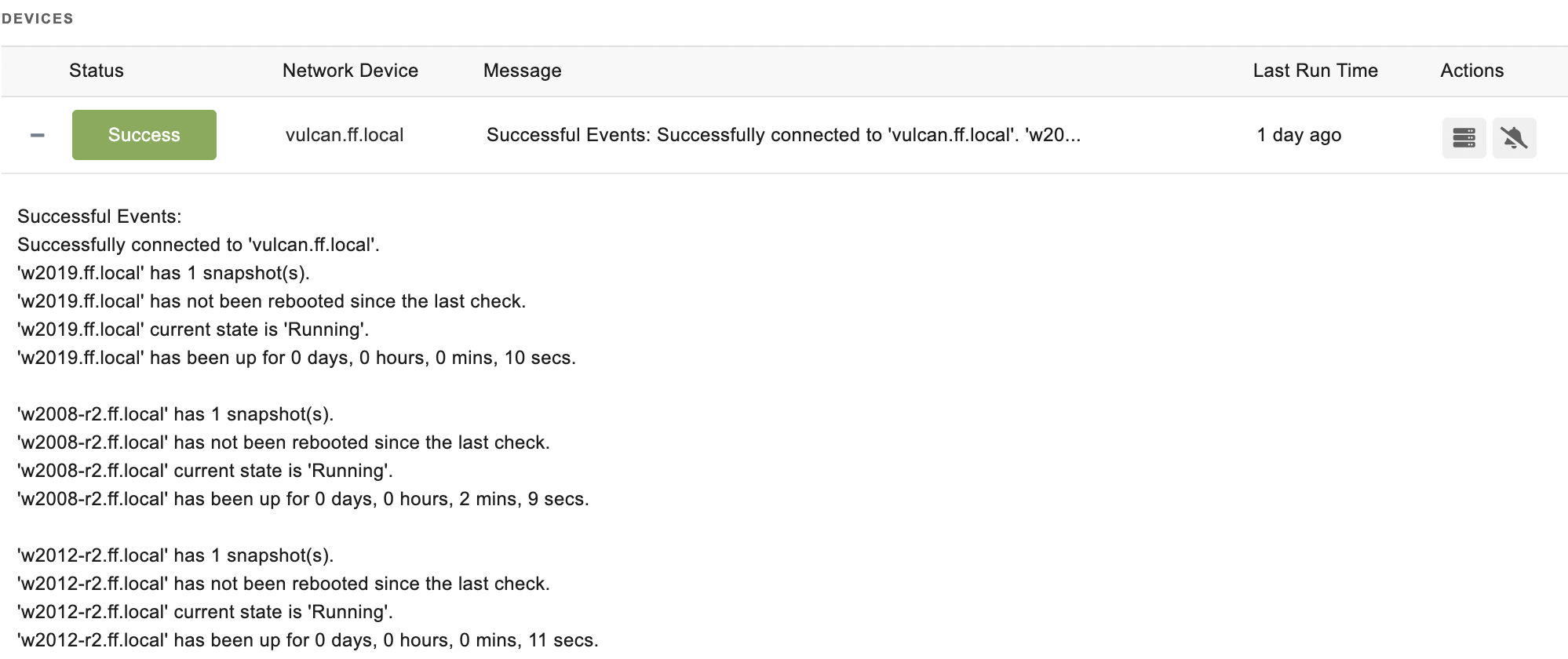Hyper-V Event Monitor Reference Guide
Hyper-V Event Monitor
Monitors the Hyper-V core and the virtual machines hosted on it.
Overview
The Hyper-V Event Monitor connects to the hypervisor to retrieve data about the Hyper-V core and the virtual machines that it hosts.
Use Cases
- Receiving notifications about virtual machine reboots as soon as they occur
- Monitoring certain VMs while ignoring others
- Getting alerted when the state of a virtual machine changes
- Getting alerts about the number of snapshots for a virtual machine
Monitoring Options
This event monitor provides the following options:
Alert with [Info/Warning/Error/Critical] if the host is unreachable
Select this option to get alerts if FrameFlow could not contact the selected device.
Alert if more than a specified number of snapshots/checkpoints are found
This option can be used to alert about the number of snapshots (also called checkpoints) that were detected. Snapshots are very useful for rolling back a system to a known configuration but they require a significant amount of storage.
Alert with [Info/Warning/Error/Critical] if a virtual machine is rebooted
Use this option to alert when any virtual machine has been restarted. To detect reboots the event monitor keeps track of the up time for each virtual machine. If the up time on the current run is less than that detected on the previous run then the virtual machine has been restarted.
Alert with [Info/Warning/Error/Critical] if a virtual machine's state changes
Enabling this option will generate alerts whenever the state of a virtual machine changes. For example, it will alert if the VM goes from Running to Stopped, Saved to Running, or if any other state change occurs.
Ignore transitions to running
Select this option if you want to be alerted about virtual machine state changes but would prefer not to be alerted when a VM enters the running state.
Include the guest uptimes in all notifications
With this option selected, all alerts and notifications will include the uptime for each virtual machine that was detected.
Virtual Machines to ignore
Enter all or part of the name of the virtual machine(s) that you want to ignore. You can specify multiple strings by separating them with commas. Any virtual machine that has any of the specified strings in its name will be ignored.
Authentication and Security
The account used for authentication must be a member of the Performance Monitor Users group and the Distributed COM Users group, or have admin rights.
Protocols
Data Points
This event monitor generates the following data points:
| Data Point | Description |
|---|---|
| Up Time | The time the device has been up and running. |
Sample Output

Comments
Add a comment